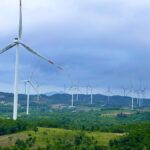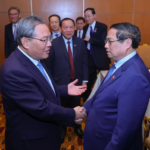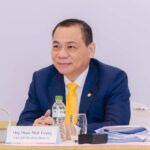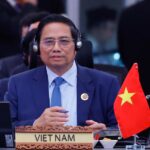The project consists of three main components: a wind farm with an approximate capacity of 2GW in Vietnamese waters, an extensive underground cable system spanning thousands of kilometers connecting two Southeast Asian countries, and transformer stations at both connection points.
According to General Director Tran Ho Bac‘s assessment, this model is unprecedented in the Asia-Pacific region and could be one of the first projects to materialize the goal of cross-border electricity grid connection within ASEAN. Therefore, the complex nature, especially the legal aspect, is considered a significant challenge during implementation.
Marine surveys, wind measurements, and hydrological analyses are being expedited this May to facilitate the feasibility report preparation. If the project stays on course, the complex could be operational by 2033. Consequently, revenue from electricity sales is expected to be sustained for up to 50 years, generating a stable and long-term cash flow.
“This is a very ambitious and challenging project,” said the General Director of PVS. The plan was initiated after receiving support from the high-ranking leaders of Vietnam, Singapore, and Malaysia at the recent ASEAN Summit.
While investing in wind farms is a new venture, PTSC is not entirely a “latecomer” in the industry’s value chain. In 2024, this segment contributed approximately 24% of total revenue through technical service contracts for offshore projects. This proportion could increase to 30-35% in the next few years due to the energy transition trend and expanding construction capabilities.
To meet international market demands, PTSC has doubled its manufacturing capacity in the last three years and aims to double it again in the next phase. Construction infrastructure is being expanded, additional high-tech equipment is being invested in, and the standard system is being transitioned from American to European standards to meet the technical requirements of wind power partners.
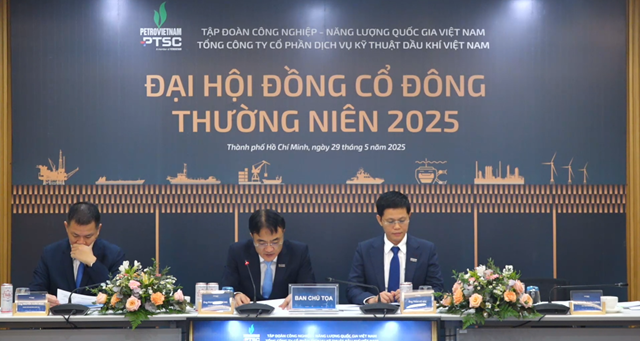
PTSC leaders conducting the conference on the morning of May 29. Source: Screen capture
|
Vung Tau continues to be the center for super-heavy structure construction
In parallel with renewable energy, the traditional oil and gas sector remains the mainstay of the company’s operations. In the short term, this segment is expected to account for about 60-70% of total revenue.
In terms of infrastructure, the Nghi Son (Thanh Hoa) and Quang Ngai ports are being expanded to simultaneously serve cargo transportation and EPC construction. Once completed, these two areas will increase construction support capacity by about 20%. However, super-large and super-heavy structures still need to be constructed in Vung Tau, as the facilities here fully meet the technical standards.
In addition to traditional sectors such as seaports, service vessels, and mechanical engineering, PTSC continues to expand into mine clearance and carbon recovery and storage fields. In the nuclear power sector, the company is finalizing internal procedures and building a team of personnel to be ready when there is a policy from the State.
PTSC is also working with Hoa Phat Group (HOSE: HPG) to explore the possibility of localizing manufacturing materials. Specialized steel used for offshore structures is currently imported. If Hoa Phat can produce it domestically with international-standard quality, it will be a significant step forward in reducing costs, shortening construction time, and increasing the localization rate in the clean energy supply chain.
In 2025, the company sets a cautious target with an expected revenue of about VND 22.5 trillion, a 10% decrease, and an estimated profit after tax of VND 780 billion, a 38% drop.
In the first quarter of 2025, revenue exceeded VND 6 trillion, a 62% increase and the highest ever for a first quarter. Profit after tax was nearly VND 300 billion, a slight decrease.
| PTSC’s net profit reaches a 7-year high |
Regarding finances, the General Director mentioned that PTSC might increase its charter capital from the current VND 4.7 trillion to VND 9 trillion in the next few years and potentially up to VND 15 trillion by 2030. The plan includes issuing shares to existing shareholders, paying dividends in shares, and offering private placements to strategic investors.
The meeting also approved the signing of a contract for the provision, operation, and maintenance of a floating storage and offloading (FSO) unit for the Lot B project, with a maximum exploitation period of up to 23 years, including 14 fixed years and a maximum extension of 9 years. As a result, the contract value could exceed $600 million, creating a long-term and stable revenue stream throughout the project’s life.
– 09:00 30/05/2025
Deploy Synchronized Solutions to Achieve Renewable Energy Growth as per the Power Development Plan VIII
The transition to green energy is a challenging journey that demands a collective vision and commitment from governments, businesses, citizens, and the global community. It requires a unified effort to pave the way for a sustainable future, where we can harness the power of renewable sources and secure a cleaner, greener tomorrow. This journey is not without its obstacles, but with dedication and collaboration, we can overcome these hurdles and forge a path toward a brighter, more sustainable world.
“Prime Minister Pham Minh Chinh Proposes China Prioritize Railway Cooperation”
During his meeting with Chinese Premier Li Qiang, Prime Minister Pham Minh Chinh proposed prioritizing railway cooperation and expressed his determination to commence the construction of the Lao Cai-Hanoi-Hai Phong route in 2025. He requested China’s support in preferential credit, technology transfer, and human resources development.
“ASEAN, GCC, and China: Forging a Historic Trilateral Partnership for a New Era of Strategic Cooperation”
On the afternoon of May 27th, in Kuala Lumpur, Malaysia, Prime Minister Pham Minh Chinh led a high-level Vietnamese delegation to attend the ASEAN-Gulf Cooperation Council (GCC) Summit with China, themed “Strengthening Economic Connectivity for Shared Prosperity.”


